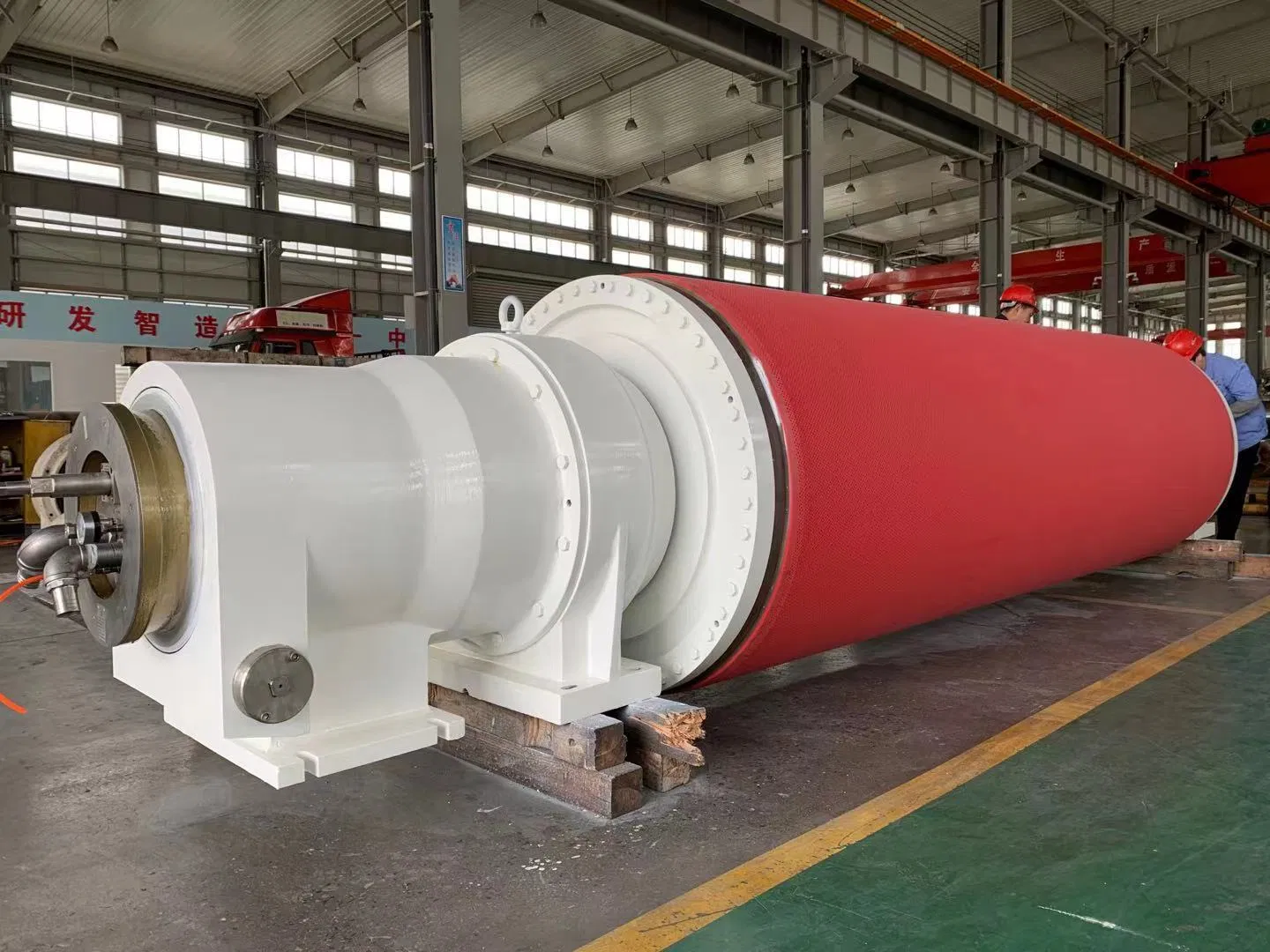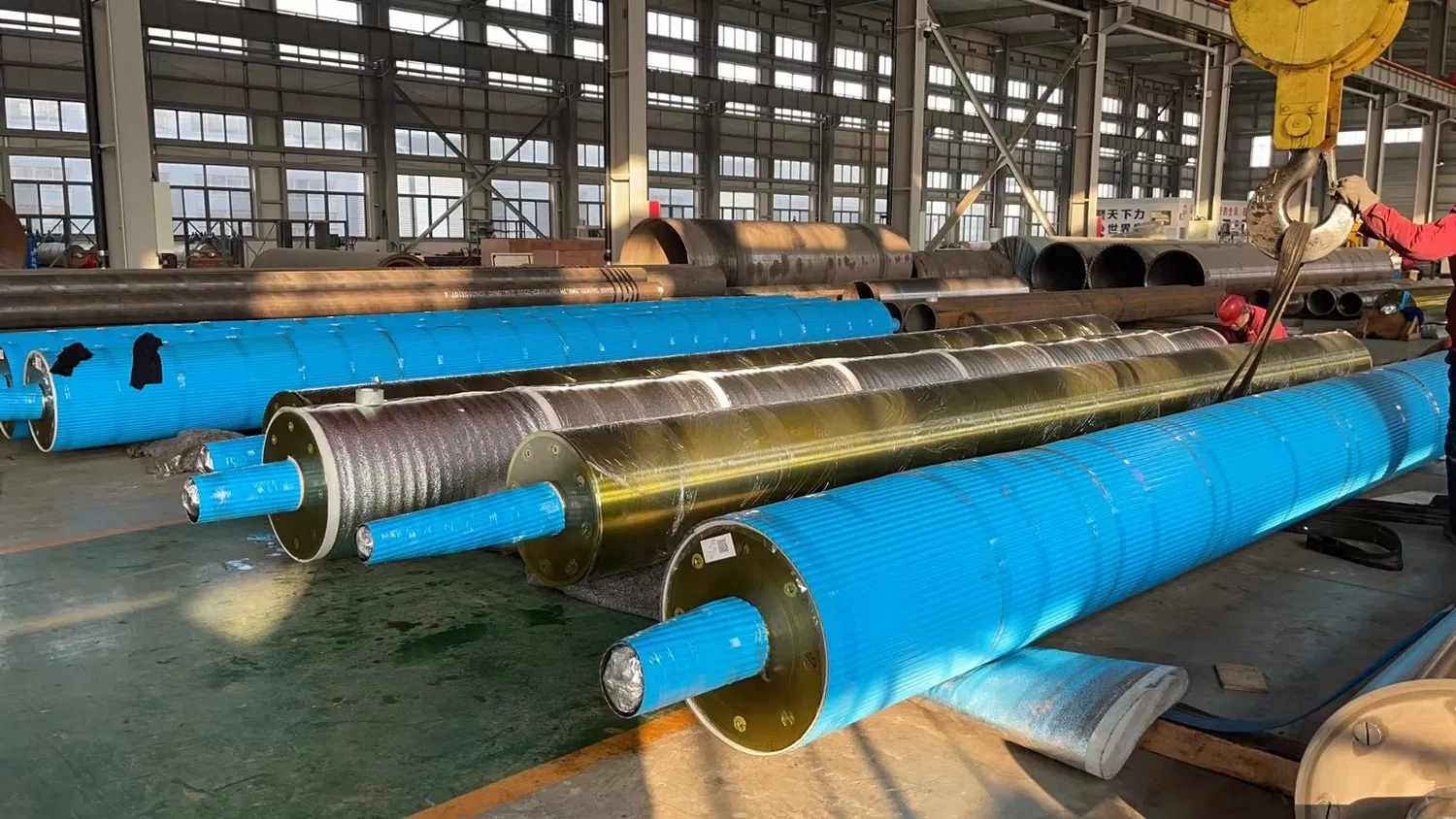In the complex and energy-intensive world of papermaking, the press section stands out as a critical control point. While every section of the paper machine plays a vital role, the press section holds the key to significant operational savings and product quality improvements. To be honest, the efficiency of water removal here directly dictates the steam demand in the subsequent dryer section, which is often the single largest energy consumer in the entire mill. An inefficient press is a direct drain on profitability, leading to slower machine speeds, higher energy bills, and potential compromises in sheet quality.
The fundamental goal is simple: remove as much water as possible mechanically, before the sheet ever feels the heat of the dryers. Why is this so important? It's a matter of pure physics and economics. Removing water by mechanical pressing is exponentially more energy-efficient—and therefore cheaper—than evaporating it with steam. Many experts agree that it can be 10 to 20 times less expensive to squeeze a kilogram of water out than to boil it off. This article delves into the core strategies and technical considerations required to truly maximize dewatering efficiency in your paper machine press section, transforming it from a simple processing step into a powerhouse of productivity and savings.
Understanding the Critical Role of the Press Section in Overall Dewatering Efficiency
Before diving into optimization techniques, it's crucial to appreciate the unique function of the press section within the broader papermaking process. The journey of a paper sheet begins in the forming section, where a slurry of 99.5% water and 0.5% fiber is transformed into a fragile, wet web. Here, gravity and vacuum elements remove a massive volume of water, but the sheet still enters the press section with a consistency of only around 18-22% solids (meaning it's still about 80% water).
The press section's job is to dramatically increase that solids content through mechanical pressure. By guiding the sheet on porous press felts through a series of high-pressure nips—the contact points between large rolls—water is squeezed from the sheet into the felts, which then carry it away to be removed by suction boxes (Uhle boxes). A highly efficient press section can raise the sheet's solids content to 45-55%. This single step removes more than half of the remaining water, a feat that would otherwise require an enormous amount of thermal energy in the dryers.
The benefits extend beyond energy savings. Proper pressing consolidates the fiber network, which significantly improves the final sheet's strength, density, and surface smoothness. It reduces sheet breaks, allowing for higher machine speeds and greater overall equipment effectiveness (OEE). In essence, optimizing press section dewatering isn't just an energy-saving initiative; it's a foundational strategy for enhancing the entire papermaking operation.

Optimizing Press Nip Mechanics for Maximum Water Removal
The heart of the press section is the nip itself. The dynamics within this tiny, high-pressure zone determine the success of the entire dewatering effort. Mastering these mechanics is non-negotiable for achieving peak efficiency.
Press Loading and Nip Pressure Profiles
The core principle of pressing is applying pressure over a specific duration. This is often referred to as the "P&T" principle: Pressure and Time. The amount of water removed is a function of both the peak pressure applied in the nip and the dwell time the sheet spends under that pressure. However, simply cranking up the pressure isn't the answer. Excessive peak pressure can crush the sheet, damaging fibers and negatively impacting quality. The key is to achieve the highest average nip pressure over the longest possible dwell time without causing damage.
A critical factor here is the uniformity of the pressure profile across the entire width of the machine (the cross-direction, or CD). An uneven nip load will lead to wet and dry streaks in the paper, causing major problems in calendering, reeling, and printing. Modern presses use crown-controlled rolls, which can be adjusted to counteract the natural deflection of the roll under load, ensuring a perfectly uniform linear load (measured in pounds per linear inch, or PLI) from the front to the back of the machine.
The Role of Roll Covers and Grooving
The surface of the press rolls is just as important as the pressure applied. Roll covers, typically made from advanced polyurethane or rubber composites, are engineered for specific hardness (P&J) and durability characteristics. The cover's material and design influence the shape and feel of the nip. A softer cover creates a wider nip, increasing dwell time but lowering peak pressure, which can be beneficial for certain paper grades.
Interestingly enough, a solid, smooth roll is not ideal for dewatering. For water to escape the sheet, it needs a path. This is where grooved and blind-drilled rolls come in. These rolls feature small channels (grooves) or holes (drills) that act as reservoirs. As the sheet and felt pass through the nip, water is squeezed into these voids and carried away, preventing it from being reabsorbed by the sheet on the exit side of the nip—a phenomenon known as rewetting. Keeping these grooves and holes clean and open is a vital maintenance task.
Shoe Press Technology: A Game Changer for Dewatering
For many paper grades, especially packaging and board grades, shoe press technology has revolutionized dewatering. Unlike a conventional press with two round rolls creating a very short, high-pressure nip, a shoe press uses a stationary, curved "shoe" pressing against a rotating roll. This creates an "extended nip" that is 5 to 10 times longer than a conventional one. This extended dwell time allows for more water to be removed at a lower peak pressure, which is gentler on the sheet. The result is a significant increase in post-press dryness (often 5-10 percentage points higher) without sacrificing bulk, a critical property for many board grades.
The Unsung Hero: Selecting and Conditioning Press Felts for Peak Efficiency
If the nip is the heart of the press, the press felt is its circulatory system. This highly engineered textile is responsible for supporting the fragile sheet, absorbing the water squeezed out in the nip, and transporting it away for removal. A felt that is poorly chosen or inadequately maintained will completely undermine even the most perfectly optimized press mechanics. Have you ever considered how much performance is lost due to suboptimal felt conditioning?
Choosing the Right Press Felt Design
Modern press felts are complex, multi-layered structures. They consist of a durable base weave for stability and a fine batt of fibers on the surface for smoothness and water handling. When selecting a felt, several properties must be balanced:
- Permeability: The felt must be open enough to accept water quickly in the nip.
- Void Volume: It needs sufficient internal space to hold the water until it can be removed by the Uhle boxes.
- Compressibility and Resilience: The felt must compress in the nip to transmit pressure but immediately spring back to its original thickness to prevent rewetting and maintain void volume.
- Surface Characteristics: The sheet side must be smooth to prevent marking the paper.
The ideal design depends heavily on the press position (first, second, or third press) and the paper grade being produced. In my experience, working closely with a felt supplier to select a custom-designed felt for each specific application yields the best results.
Implementing a Proactive Felt Conditioning Strategy
A brand-new felt performs beautifully, but it immediately begins to get compacted and contaminated with fibers, fines, and "stickies" (resinous or adhesive contaminants from recycled fiber or additives). A robust conditioning system is essential to keep the felt clean and open, maintaining its dewatering capability throughout its life.
This system typically includes:
- High-Pressure Showers: Oscillating needle-jet showers use high-pressure water to dislodge contaminants from deep within the felt structure. The pressure, volume, and oscillation speed must be carefully controlled to clean effectively without damaging the felt fibers. * Chemical Cleaning: Both continuous and intermittent (batch) chemical washing programs are used to dissolve contaminants that water alone cannot remove. Alkaline washes target stickies and pitch, while acid washes handle mineral scale. * Uhle Boxes: These are suction boxes that dewater the felt itself after it has absorbed water from the sheet. Proper vacuum levels are critical; too little vacuum leaves the felt saturated, while too much can compact the felt and increase drag on the machine.

Leveraging Advanced Monitoring and Control to Sustain Dewatering Performance
In the modern paper mill, you can't manage what you don't measure. Sustaining peak dewatering efficiency requires moving beyond periodic manual checks and embracing a data-driven approach using advanced sensors and control systems.
Key Performance Indicators (KPIs) for Dewatering
To truly understand press performance, operators need a real-time view of several KPIs. The most important of these is, without a doubt, the sheet moisture profile measured by a scanner immediately after the press section. This provides the ultimate report card on dewatering performance. Other critical KPIs include:
- Sheet dryness entering the press section.
- Felt moisture content, measured continuously by a portable or online sensor.
- Vacuum levels at the Uhle boxes.
- Press roll drive loads, which can indicate issues with friction or felt drag.
- Steam pressure and flow in the first dryer section, which directly reflects the water load coming from the press.
Tracking these metrics over time allows operators to spot performance degradation long before it becomes a major problem, enabling proactive adjustments rather than reactive troubleshooting.
The Power of Data Analytics and Process Control Systems
It's worth noting that modern Quality Control Systems (QCS) and Distributed Control Systems (DCS) are powerful tools for automation. For example, the CD moisture profile from the scanner can be fed back to the crown-controlled roll's hydraulic system, which can then automatically adjust the nip loading profile to flatten out the moisture streaks. Similarly, Uhle box vacuum can be automatically controlled to maintain a consistent felt moisture level, adapting to changes in machine speed or felt age. By integrating these systems, mills can achieve a level of stability and optimization that is simply impossible to replicate with manual control.
Addressing Common Pitfalls That Sabotage Press Section Dewatering
Even with the best equipment and technology, certain common issues can quietly undermine dewatering efficiency. Being aware of these pitfalls is the first step toward preventing them.
The Silent Killer: Rewetting
Rewetting occurs when the paper sheet, after being squeezed in the nip, reabsorbs water from the felt or the roll surface on the exit side. It's a subtle but significant thief of efficiency. The primary causes are a saturated felt (due to inadequate conditioning or Uhle box vacuum), water being thrown out of dirty roll grooves at high speed, or poor geometry of the sheet run as it separates from the felt. Ensuring the felt is dewatered effectively and that the sheet separates from the felt and roll surfaces cleanly and immediately after the nip is paramount.
Ignoring the Incoming Sheet: The Forming Section's Impact
The press section cannot work miracles. Its performance is heavily dependent on the quality of the sheet it receives from the forming section. If the sheet has poor formation (i.e., uneven fiber distribution) or an excessively high water content, the press will struggle. Wet spots in the sheet will not dewater as effectively, leading to moisture streaks that persist all the way to the reel. A holistic, machine-wide approach is necessary; optimizing the press section in isolation without considering the forming section is a recipe for frustration.
Inconsistent Maintenance Practices
Finally, the foundation of sustained performance is disciplined, proactive maintenance. This goes beyond the felt conditioning discussed earlier. It includes regular roll grinding to maintain perfect profiles, routine inspection and cleaning of shower nozzles, calibration of sensors, and vibration analysis to monitor the health of bearings and gears. A "run-to-failure" approach in the press section inevitably leads to a slow, steady decline in dewatering efficiency that costs the mill dearly in the long run.
Maximizing dewatering efficiency in the paper machine press section is a multifaceted challenge, but the rewards are immense. By focusing on the core pillars of optimizing nip mechanics, managing press felts meticulously, leveraging data for control, and maintaining a rigorous maintenance culture, any paper mill can unlock significant savings in energy, boost production rates, and ultimately produce a higher quality product. It is an investment in operational excellence that pays dividends on every ton of paper that comes off the reel.
For more detailed information, please visit our official website:dewatering efficiency
About the author: David Chen is a Senior Process Engineer with over 20 years of hands-on experience in paper machine optimization and efficiency improvement. Specializing in the press and dryer sections, he has helped numerous mills across the globe reduce energy consumption and enhance sheet quality through data-driven strategies and advanced process control. David is passionate about translating complex engineering principles into practical, actionable solutions for the modern papermaker.


